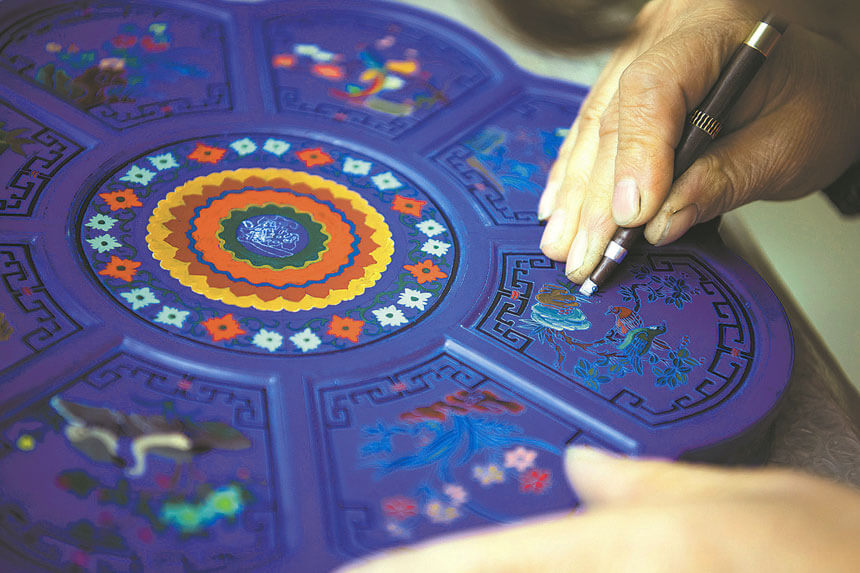Bardoek appears to be an emerging or regionally-specific term that different sources define inconsistently. While some describe it as a traditional textile technique from Southeast Asia related to batik, others reference it as a spiritual practice or even a culinary concept. Current authoritative sources provide conflicting information about its true origins and meaning.
What Is Bardoek
Authentic information about Bardoek remains unclear and contradictory across sources. Some references describe it as a traditional craftsmanship technique from Southeast Asia, particularly Indonesia, with similarities to batik textiles.
Based on available sources, Bardoek may refer to a handwoven fabric tradition that shares characteristics with Indonesian batik. The practice appears to have connections to Southeast Asian heritage, particularly Indonesian culture, and serves as a method of non-verbal communication through its patterns and colors . However, reliable documentation about its specific origins and techniques remains limited compared to established textile art forms.
The term itself appears to have emerged in various contexts without clear academic or Indonesian culture backing. This makes it difficult to provide definitive information about authentic Bardoek practices versus mass-produced interpretations.
Origins and Cultural Background
The historical roots of Bardoek are not well-documented in authoritative sources. Different publications offer conflicting accounts of its origins and cultural heritage significance.
Some sources suggest folkloric origins, describing it as encapsulating beliefs and practices that evolved over centuries, initially associated with rites of passage serving as a bridge between physical and spiritual realms . However, these descriptions lack specific geographic or cultural anchoring within Southeast Asian heritage.
Other sources connect it to artisan work and traditional textile production in Indonesia, suggesting connections to farming cycles that developed into more structured handicraft practices. The lack of consistent historical documentation makes it challenging to verify these claims about heritage-rich traditions compared to well-established Indonesian textiles like songket.
Materials and Traditional Techniques
Information about authentic Bardoek materials and techniques varies significantly between sources. Without standardized documentation, specific details about wax application and dye processes remain uncertain.
Some descriptions mention the use of natural fibers like cotton or silk, along with plant-based dyes extracted from roots, leaves, bark, and minerals . These natural materials supposedly create rich tones that become more beautiful with age, similar to traditional Indonesian wax-resist dyeing techniques used in established textile arts.
Time-honored methods may involve handlooms that give Indonesian artisans control over tension and pattern arrangement. However, the specific tools and processes remain poorly documented compared to well-established crafts like batik, which uses recognized resist techniques and has UNESCO recognition.
Modern Applications and Revival
Contemporary interest in Bardoek appears to be growing, though specific applications remain vague. The revival seems connected to broader trends toward authentic, handmade products that contrast with machine-made alternatives.
People now seek authentic, handmade, and culturally rich items in our mass-production era, which has sparked new interest in this ancient practice . This aligns with the sustainable materials movement and appreciation for artisanal work with ceremonial significance.
Modern designers and cultural enthusiasts may be exploring Bardoek-inspired work, though documented examples remain limited. The practice appears to attract both casual admirers and collectors interested in traditional craft with potential royal patronage connections, similar to established Indonesian textile traditions.
Identifying Authentic Pieces
Recognizing genuine Bardoek presents challenges due to limited standardization and documentation. Without clear traditional markers, authentication remains difficult compared to verified textile traditions.
Authentic pieces reportedly showcase precise craftsmanship with slight variations in pattern or color that indicate handmade origin, with natural fibers and cultural documentation or artisan signatures helping verify authenticity . However, these criteria are general and apply to many traditional crafts without specific motif identification systems.
Look for handmade details throughout pieces, including unique imperfections that signal quality through slight variations that machines cannot replicate. Natural materials and plant-based dyes may indicate traditional methods, though verification requires expert knowledge of symbolic patterns and authentic production techniques.
Current Challenges and Preservation
The preservation of Bardoek faces significant obstacles, primarily due to unclear definitions and limited documentation. Without established traditions or recognized artisan communities, cultural preservation efforts remain challenging.
Cultural appropriation concerns arise when traditional practices lack clear cultural ownership or documentation. The absence of verified artisan communities makes it difficult to ensure ethical sourcing and fair compensation for traditional knowledge, unlike established textile traditions supported by textile museums.
Market confusion may result from inconsistent definitions, making it difficult for consumers to make informed decisions about authentic pieces versus mass-produced imitations that lack genuine cultural connections.
Where to Find and Support Authentic Work
Locating genuine Bardoek presents challenges due to limited verified sources and unclear authenticity markers. Potential buyers should exercise caution when purchasing items labeled as “Bardoek” without proper documentation.
Research sellers thoroughly and look for detailed information about origins, materials, and production methods. Support established cultural cooperatives and verified artisan communities rather than unclear sources. Consider supporting well-documented traditional crafts like Indonesian ikat instead, which offer clear cultural heritage and established artisan networks.
Cultural documentation and provenance become crucial when dealing with poorly documented craft traditions. Buyers should prioritize transparency and verified cultural connections over marketing claims that may misrepresent authentic traditional practices.
Important Note: This article reflects the current state of available information about “Bardoek.” The term appears in various contexts with conflicting definitions, and authoritative sources about its traditional craft aspects are limited. Readers interested in traditional Southeast Asian textiles may find more reliable information about established crafts like Indonesian batik, Malaysian songket, or other well-documented regional textile traditions.*
Key Points for Readers:
- Bardoek definitions vary widely between sources, with no clear consensus on its meaning or origins
- Limited authoritative documentation makes verification of traditional practices difficult
- Established alternatives like Indonesian batik offer similar aesthetic appeal with documented cultural heritage
- Buyer caution is advised when purchasing items labeled as “Bardoek” due to unclear authenticity standards
- Cultural research into verified traditional crafts may provide more reliable and meaningful alternatives
*Research conducted in 2025 reveals limited verifiable documentation of “Bardoek” as a distinct traditional craft in authoritative academic, museum, or cultural heritage sources. Most references appear in lifestyle or commercial contexts without established cultural backing.













